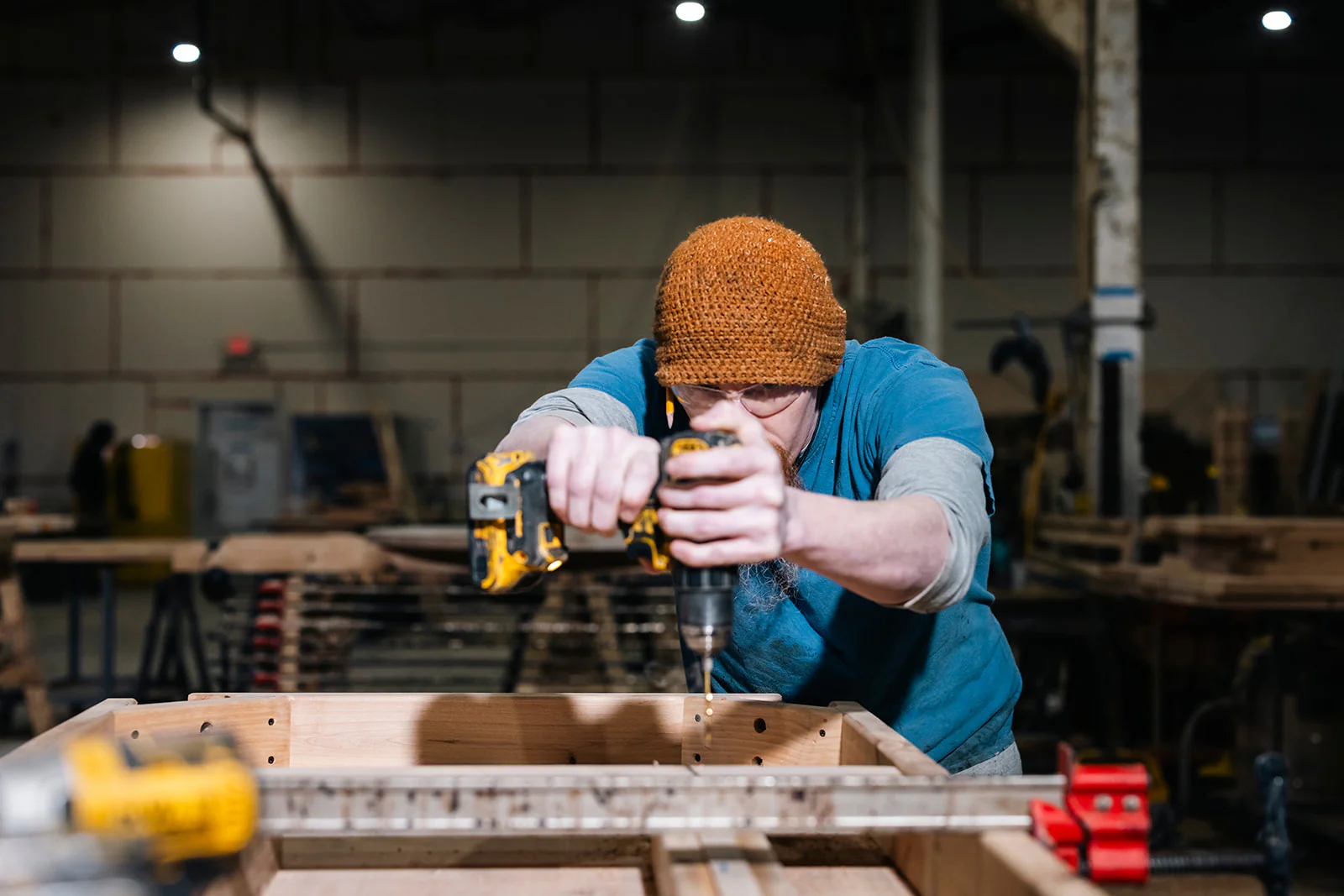
The James & James Promise
We believe craftsmen should stand behind their products. That’s why we promise:
- If your item(s) isn’t delivered in the correct color, size (after allowing for our 1” variance), or style that you ordered, we will replace it.
- If your item(s) arrives damaged and the damage is noted upon the delivery paperwork, we will evaluate the damage and at our discretion either repair or replace some or all of the product that is damaged.
- If your item(s) ever unnaturally cracks or splits, we’ll fix or replace it as indicated in our warranty.
Our furniture is handcrafted from real wood and exhibits unique rustic qualities. Please be sure to read our cosmetic standards before ordering.
At James & James, we take great pride in each and every unique piece of solid hardwood furniture that we sell. Our team hand-finishes each piece of Furniture, crafting it from solid hardwood with a rustic, reclaimed appearance. Given the handmade and hand-finished craftsmanship of our products, natural variations and imperfections in the wood are to be expected and celebrated! Just as every tree in unique, so too is every piece of furniture that is handcrafted and hand finished just for you. Every piece of furniture will have a unique grain pattern and slight color variation.
Other characteristics of handcrafted, solid wood furniture include open knots, (please note that knots on top surfaces are filled by our craftsmen for a smooth finish) visible brush strokes, micro-imperfections, and textural variations. Other characteristics can include but are not limited to distress marks, exposed hardware, wood filler marks, rustic welds, metal oxidation, joint lines and other minor imperfections. We allow up to 1” of variation across all measurements due to the custom, handcrafted nature of our furniture.
Solid wood may expand and contract due to changes in temperature and humidity. This natural movement enhances the one-of-a-kind beauty of solid hardwood and handcrafted furniture. This movement does not affect the structural integrity and is not considered defective. While James & James makes every attempt to provide the best photos of our finished pieces, each piece created is unique. WE DO NOT OFFER MACHINE-MANUFACTURED PERFECTION, no two pieces are exactly alike since James & James furniture is crafted to your order specifications. We celebrate the true uniqueness of every piece of solid wood furniture that is built and finished by hand in our woodshop.
PRODUCT SPECIFICATIONS
James & James makes every effort to accurately display products on the site. However, displayed colors may depend upon the quality of a user’s monitor, and James & James cannot guarantee that a user’s monitor will accurately display the color of the products. In addition, minor variances in size and shape may occur, as our products are handmade to order. James & James strongly recommends that you order a finish sample to offset any finish color variations that are not accurately displayed on your screen.
STORAGE
James & James is unable to “HOLD” a customer’s order once it has been completed. Should the customer need an item completed at a specific time in the future, it is the customers responsibility to divulge this information when placing the order. James & James will make every attempt to complete the item as close to that date as possible; however, this cannot be guaranteed. Should a customer be unable to take delivery in the allotted time set forth by the delivery company (a maximum of 14 days) once their items have shipped, storage fees will be accrued at the customer’s expense until the items can be delivered. This is ultimately the customer’s responsibility, and this arrangement must be worked out the delivery company.
WARRANTY
Your Furniture covered by a limited warranty (the “Furniture Warranty”). If there is an issue with your Furniture, then please review the Furniture Warranty and e-mail us at care@carpenterjames.com. The Furniture Warranty is incorporated by reference into these Terms. To the extent there is a conflict between the terms of the Furniture Warranty and these Terms, the terms of the Furniture Warranty will govern with respect to Furniture purchased from James & James. The Furniture Warranty only applies to furniture used for normal residential purposes. The Furniture Warranty does not cover products sold in “distressed” or “as is” condition, products sold “second hand” or as “floor samples”. The Furniture Warranty is only valid in James & James Shipping Area (Contiguous 48 States) and does not apply to any furniture which has been moved outside of the Shipping Area. Please note that the warranty will be considered voided if the piece is not able to be successfully delivered by our drive team due to fit; or if the piece is altered in any way post-delivery
REFUNDS
In the rare event that your order is inaccurate or defective, James & James will correct the issue. Any natural characteristics of handmade furniture are not considered defects. James & James will also correct any issues regarding items damaged in transit, if the damage is properly noted UPON delivery per our instructions. Due to the extreme customization of our products, James & James is unable to offer refunds, or any modifications to custom orders after 24 hours of placing an order.
If you want to return your Furniture within the first 14 days after your receipt due to damage or defects, please email James & James at care@carpenterjames.com to arrange a return pick-up. Return fees are 15% of the original purchase price before shipping. Shipping fees are not refundable. All Furniture must be successfully delivered before a return can be initiated. Please note that any transit damage or manufacturing defects must be reported within 24 hours and noted clearly on the Proof of Delivery form.
To be eligible for return, furniture must not be excessively used. Upon return pickup, appropriate credits and/or refunds will be issued for the purchase price (less 15%) of the Product(s) not including shipping cost and for any taxes due to be refunded in accordance with state law.
Furniture unable to be delivered due to sizing or fit issues is not eligible for return. All furniture produced with extra customization (sizing, configuration) is final sale. We can only accept one return or exchange per piece (identified by delivery address). We cannot accept returns or exchanges on pieces that have been altered or customized in any way post-delivery.
COPYRIGHT
Images of people, places and/or products posted on this Site are either the property of James & James or our licensors. Unless otherwise noted, all content included on this Site, including images, illustrations, designs, icons, photographs, video clips and written and other materials (together, with “Marks” (as defined below), “James & James Content”) is the property of James & James or its licensors, partners or affiliates and is protected by United States and international copyright laws. The compilation of this Site is the exclusive property of James & James and is protected by United States and international intellectual property laws. Any unauthorized use of any content or materials on this Site is strictly prohibited and may violate copyright and trademark laws, and/or the laws of privacy, publicity, and/or communications regulations and statutes. You may use the materials or content on this Site only with our prior written and express authorization. To inquire about obtaining authorization to use the materials or content on this Site, please contact us at marketing@carpenterjames.com
Abandonment. If no response is received from the customer, either to the delivery agent or to James & James, within 45 days of a piece’s arrival at the local delivery agent, James & James reserves the right to donate, dispose of, or otherwise discard the abandoned piece(s). Customers will not be refunded or compensated once their piece(s) are considered abandoned.
Cosmetic Variation Examples
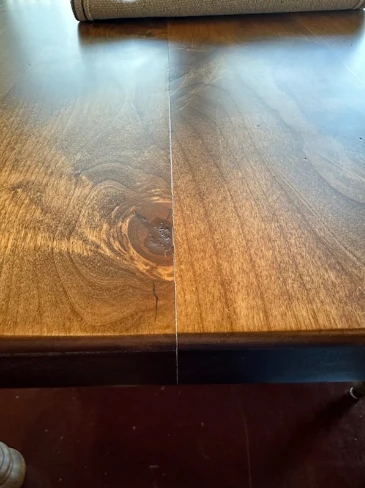
Joint Lines
A joint line is the seam where two pieces of wood are joined together in a piece of furniture. At James & James, we carefully craft each joint for strength and durability. While joint lines may be visible, they are a natural part of solid wood furniture and do not affect the integrity or quality of the piece. Our focus is on ensuring that every connection is secure and built to last.
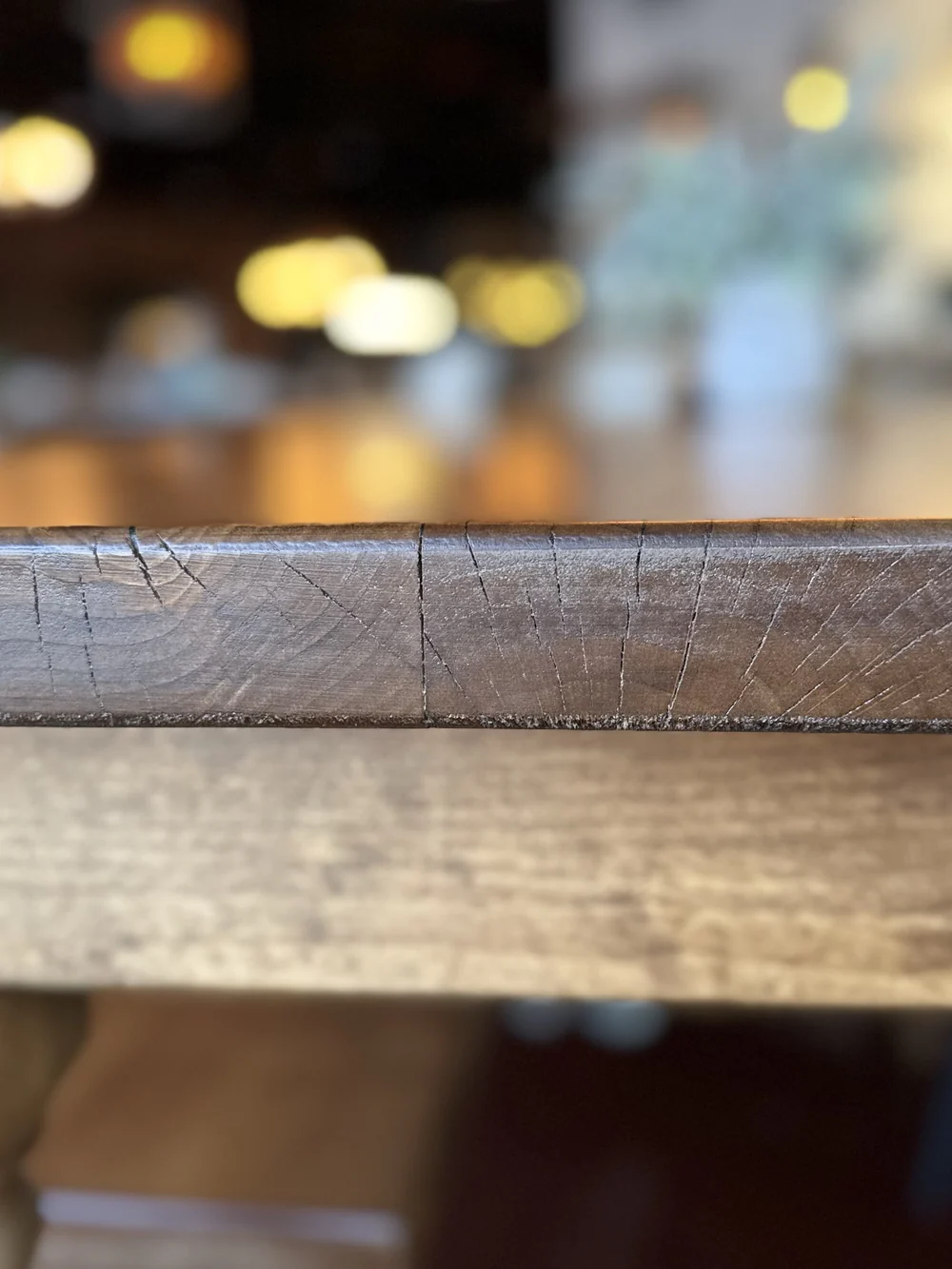
Wood Checks
Wood checks are natural cracks that can appear in solid wood as it responds to changes in humidity and temperature. Checks are a normal part of the aging process of real wood and add to its unique character. They do not impact the strength or durability of your furniture. Rather than seeing these small cracks as flaws, we view them as a testament to the authenticity of the material, showcasing the natural beauty and individuality of each piece.

Textural Variation
Textural variation refers to the different surfaces and grain patterns naturally found in solid wood. No two pieces are exactly alike, and the texture may vary from smooth areas to more rugged, natural grain patterns. These variations are a hallmark of handcrafted, solid wood furniture and contribute to the individuality and beauty of each piece. They are a reminder of the natural origin of the materials and do not affect the quality or durability of the furniture.
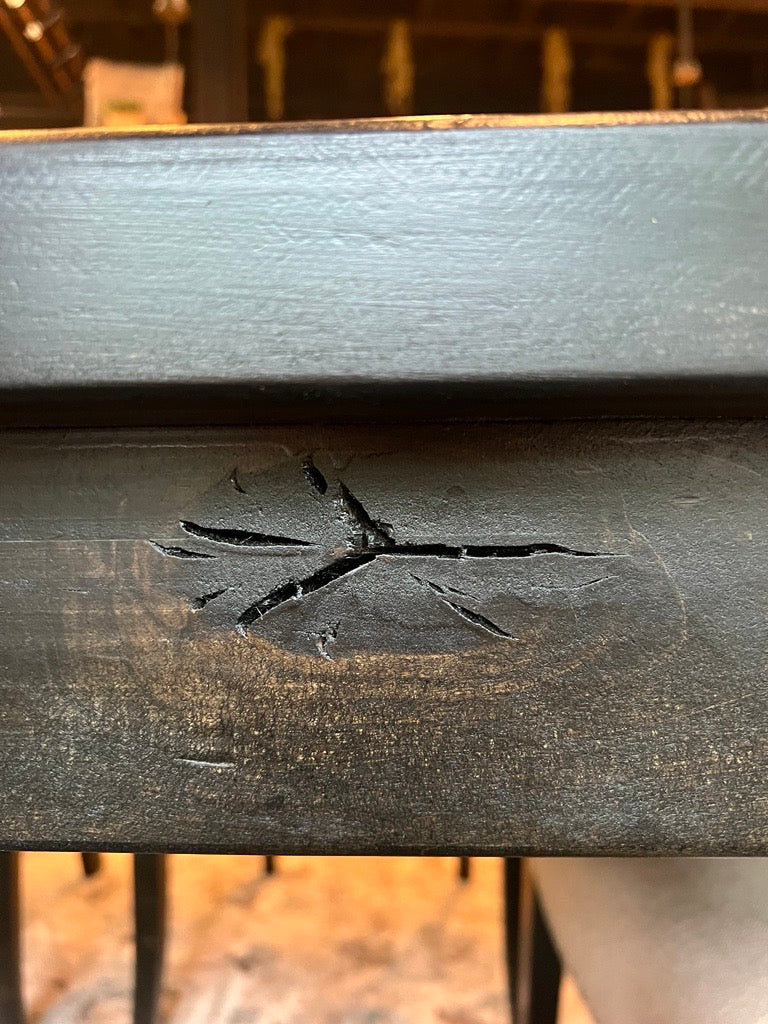
Open Knots
Open knots are natural features in solid wood that occur where branches once grew. At James & James, we preserve the beauty and character of these knots while ensuring a smooth, functional surface. Please note that our team automatically fills open knots on all surface areas, such as tabletops, to create a consistent finish. This process maintains the integrity of the wood while allowing the unique patterns of the knots to shine through, adding character without compromising durability or usability.
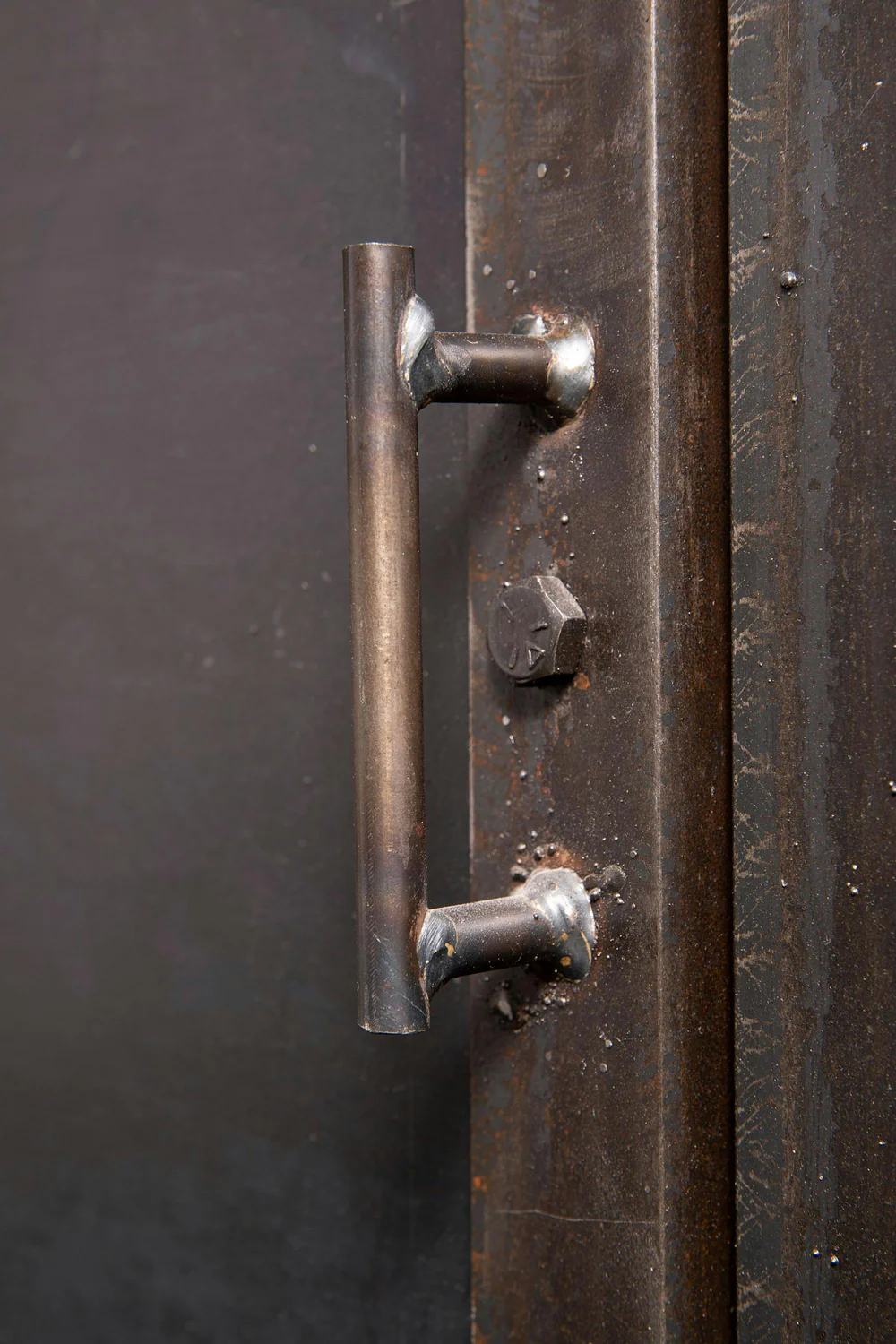
Metal Oxidation
Metal oxidation is a natural process that can occur when metal components are exposed to air and moisture over time, leading to slight changes in color or patina. At James & James, we appreciate how this subtle aging process enhances the character of metal accents in our furniture. While oxidation may alter the appearance, it does not affect the strength or functionality of the metal.